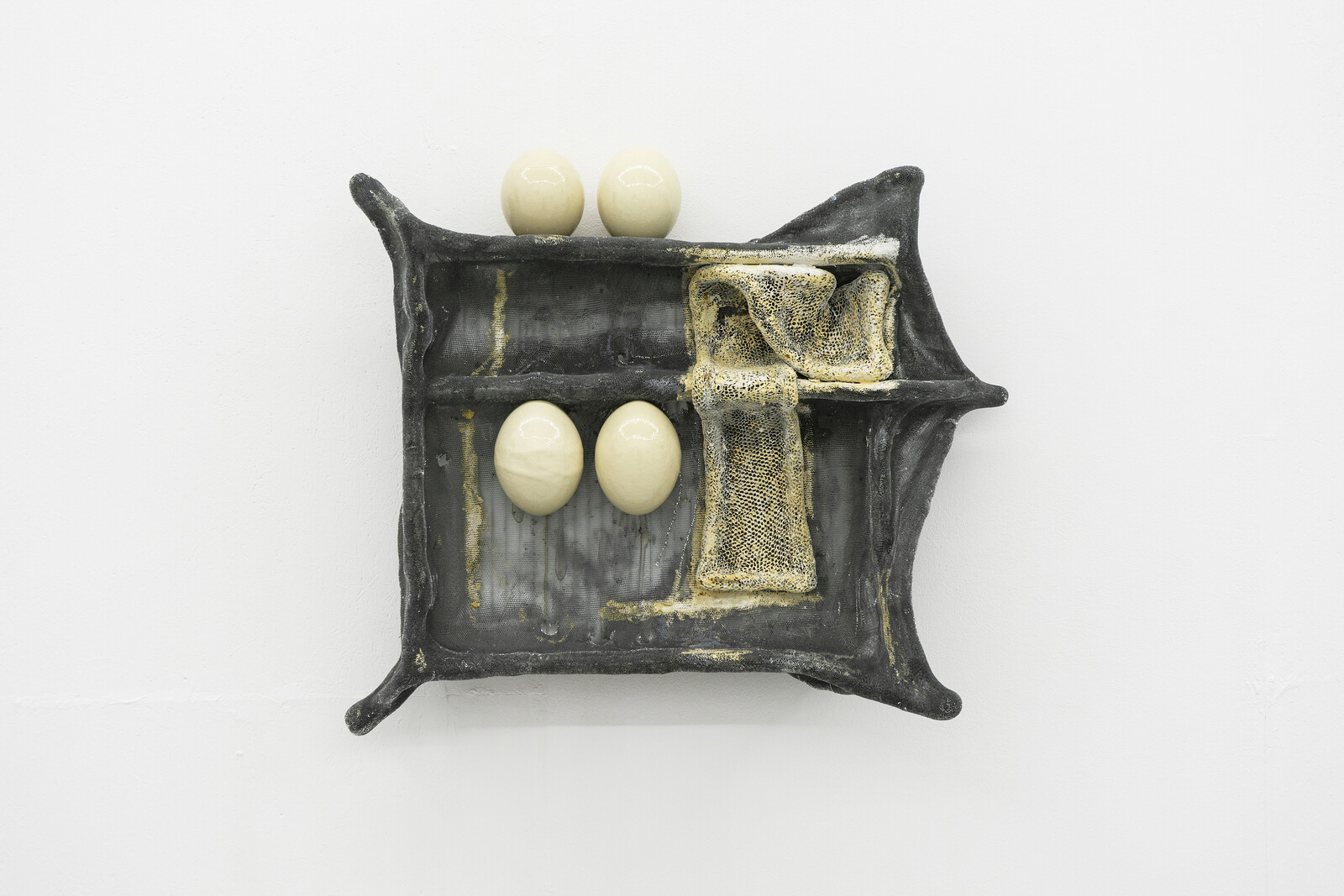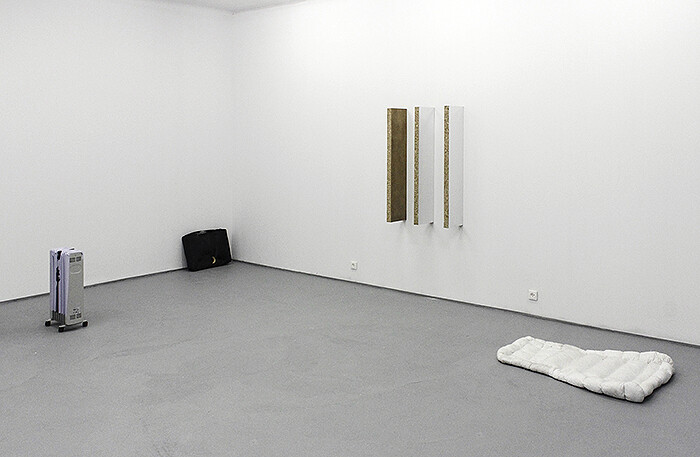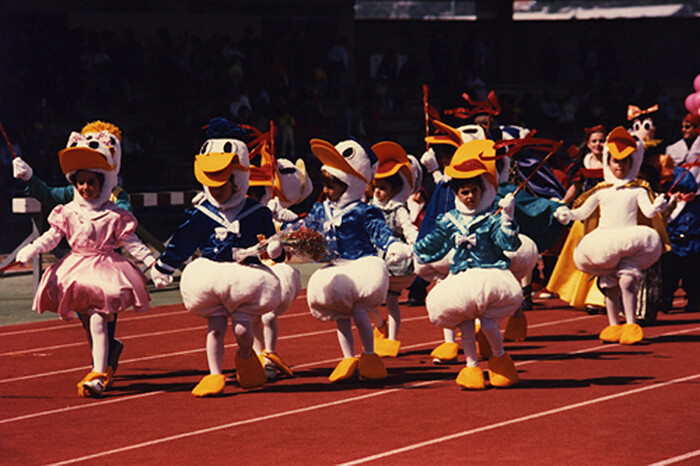Categories
Subjects
Authors
Artists
Venues
Locations
Calendar
Filter
Done
May 28, 2021 – Review
Piotr Łakomy’s “Combined Vessels”
Ewa Borysiewicz

Piotr Łakomy’s work reconsiders the classical idea of the human figure as model of good proportion. Recent events have proved beyond any lingering doubt that man is in fact not the measure of all things, and the Polish artist’s latest exhibition focuses on feedback loops between human and nonhuman agents as one alternative source of aesthetic form. Łakomy’s presentation of painting-like sculptures and sculpture-like paintings, composed of both organic and inorganic matter, hints at a possible way out of the nature-culture dichotomy.
Łakomy’s points of departure are Le Corbusier and Frederick Kiesler, whose contrasting architectural theories outline the field of his investigations. Le Corbusier’s insistence on rational principles provides Łakomy’s works with their basic structure; Kiesler’s emphasis on fluidity is reflected in the versatile and unpredictable character of the fabrics with which he fills his frames. Best known for his careful, minimalist sculptures, Łakomy has recently gravitated towards an even more ascetic style, reflected in his new sculptures’ nearly two-dimensional design and unified formats. The majority hang with their upper edge 140cm above the ground (the height is conceived to meet the eyeline of the body according to which Le Corbusier’s scale, the Modulor, was …
October 21, 2013 – Review
“The New Morals”
Agata Pietrasik

Galeria Stereo’s contribution to the third edition of Gallery Weekend, Warsaw’s pre-eminent art event, is a compact and elegant presentation of mostly sculptural, albeit intensely imagistic work by four artists: Nina Beier, Piotr Łakomy, Gizela Mickiewicz, and Michael E. Smith. It is also the first exhibition in the gallery’s stylish new space on Żelazna Street in Warsaw, having previously been based in Poznan.
The title of the show is inspired by a verse—“The new morals have altered the original data.”— from “The New Spirit,” a 1972 poem by John Ashbery. The original collection, Three Poems, in which the text appears, is available to read in the gallery space. Ashberry’s vivid, fluxed poetic language is a good match for the works on view, which could be described as exercises in the de-familiarization of everyday objects and materials. And just as with Hans Holbein’s famous anamorphic skull in The Ambassadors (1533), one often needs to look at things from a certain perspective to see them properly.
In her “Demonstrators” series (2011), Beier repurposes generic stock images—ordinarily stored in large databases and sold for commercial reproduction—by pairing these large, high-quality prints with carefully selected domestic objects. Two quintessential examples—the frame and the radiator—are shown here: …
March 9, 2012 – Review
“Crime is on Both Sides”
Karol Sienkiewicz

Symmetry rules the world, as if god created it with a mirror in hand. Stereo Gallery in Poznań, western Poland, has two rooms like a man has a pair of hands, a pair of eyes, a pair of ears, two cerebral hemispheres, etc. The stereophony in the gallery’s name reflects the musical interests of the artists it represents; moreover, the place is run by the couple Zuzanna Hadryś and Michał Lasota. But this time around, they decided to invite an outside curator, Martha Kirszenbaum, whose show features works by four artists who reacted to its dual space. “Crime is on Both Sides,” the title says.
Kirszenbaum’s curatorial concept likens the division of the gallery’s space to that of a human brain. According to a popular psychology, the brain’s lateral hemispheres are responsible for either emotional or logical functions. Quite a ‘cerebral’ vantage point, to be sure, but what’s the harm in having a little fun?
The show however, consisting of four works only, translates this dichotomous division into different modes of storytelling, or, more precisely, structuring memory, both collective and individual. To the left, in the light room, Alexandre Singh’s intricate diagram composition of collages and lines on the walls offers a …
